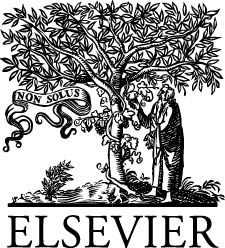Electromagnetic hypersensitive Finns: Symptoms, perceived sources and treatments, a questionnaire study
[Interessante studio dal quale emerge che le raccomandazioni ufficiali di trattamento, utilizzo di psicoterapia e farmaci, non sono risultate essere significativamente utili nel migliorare la sintomatologia lamentata dai pazienti, mentre la riduzione o l’evitamento dei campi elettromagnetici (CEM) ha aiutato nel recupero totale o parziale.
Oltre al succitato evitamento dei CEM, i migliori trattamenti per gli Elettrosensibili sono risultati essere: “cambiamento di dieta” (69,4% di risposte positive), “integratori alimentari” (67,8% di risposte positive) e “una maggiore attività fisica” (61,6% di risposte positive).
Si conclude che gli attuali protocolli ufficiali di trattamento dovrebbero tenere maggiormente conto delle esperienze della persona Elettrosensibile, inoltre viene posto l’accento sul fatto che l’evitamento di radiazioni e campi elettromagnetici ha efficacemente rimosso o attenuato i sintomi dei soggetti Elettrosensibili.]
Pathophysiology xxx (2013) xxx–xxx
By:
M. Hagström, J. Auranen, R. Ekman
Turku University of Applied Sciences/Telecommunication and e-Business/Radio and EMC Laboratory, Joukahaisenkatu 3C, 20520 Turku, Finland
ARTICLE INFO
Article history
Received: 20 December 2012
Received in revised form: 24 February 2013
Accepted: 25 February 2013
Keywords
Electromagnetic hypersensitivity (EHS)
Electromagnetic fields (EMF)
Questionnaire study
Symptoms
Diet
Antioxidants
Supplements
Psychotherapy
Complementary alternative (CAM) therapies
ABSTRACT
The aim was to analyze the subjective experiences of Finns who describe themselves as suffering from electromagnetic hypersensitivity (EHS), their symptoms, self-perceived sources of the health complaints and the effectiveness of medical and complementary alternative therapies. A total of 395 questionnaires were mailed to self-diagnosed EHS persons. Of the participants 345 belonged to a Finnish self-help group and 50 came from outside of the group. The return rate of the study was 52.1% (206) and 80.9% of the respondents were women. Before the onset of EHS the most common health complaints were different types of allergies (35.1%, 68). During the acute phase of EHS the most common symptoms were nervous system related: “stress” (60.3%, 117), “sleeping disorders” (59.3%, 115) and “fatigue” (57.2%, 111). The sources that were most often reported to have triggered EHS were: “personal computers” (50.8%, 94) and “mobile phones” (47.0%, 87). The same devices were also claimed to cause the most symptoms during the acute phase. After the acute phase of EHS had passed, the respondents still claimed to react to these same digital and wireless devices while their reactions to basic electrical appliances were reduced. According to 76% of 157 respondents the reduction or avoidance of electromagnetic fields(EMF) helped in their full or partial recovery. The best treatments for EHS were given as: “dietary change” (69.4%), “nutritional supplements” (67.8%) and “increased physical exercise” (61.6%). The official treatment recommendations of psychotherapy (2.6%) and medication (−4.2%) were not significantly helpful. According to the present results the official treatment protocols should take better account the EHS person’s own experiences. The avoidance of electromagnetic radiation and fields effectively removed or lessened the symptoms in EHS persons.
Versione PDF integrale scaricabile al seguente link:
Electromagnetic hypersensitive Finns – Symptoms, perceived sources and… – Hagström-et-al-2013


